Swans in the Bois de Boulogne, Paris 2003. Leica M4 and HP5 pushed to 3200.
Readers have probably noted along the way that I’ve never officially posted my identity on the site. There’s a reason for that. I’ve not wanted the site to be about me; for purposes of the blog, who I am is mostly irrelevant. Plus, I have a web identity in my field of work and don’t wish to conflate the two (no, I’m not a dentist). I wanted to say what was on my mind without fear of offending someone in my professional life who might stumble on the site via a google search – whether I offend someone is usually low on my list of priorities, but in our toxic American culture, where everyone thinks they have a God given right not to have their feelings hurt, you’re always going to piss somebody off when you have an opinion, so best just not tie my name to the site. Problem solved. However, as Leicaphilia has progressed (or digressed, depending how you see it), it’s content has become more personal. I’ve settled into an online persona and have revealed more about myself and the particulars of my life and backstory, and some of you, mostly those who’ve taken the time to email me, now at least know my name.
I’ve also been using odds and ends of my photo work to illustrate posts from the beginning, all without attribution, but I’ve never published a piece about a specific project I’ve done. I’ve occasionally published work submitted by readers, but I’ve made a point of not peddling my own work because it just didn’t seem to be the proper place to do it…and I’m long past the point where I want or need the approval.
All of this is prelude to the fact that I’ve decided to occasionally publish some of the photo work I’ve done through the years. Most all of it’s been done with an old Leica and film. Some of it’s been shown locally, most of it not. Good or bad, it seems a shame to sit on it, not showing it to others, when I’m able via the blog. So accept occasionally being subjected to my work as the price you pay for the other content.
*************
Paris, where there’s a great (and often cliched) photo around every corner in the ‘good’ parts of town
Some 15 years ago, while living in Paris, I was lucky to make friends with a native Parisian, also a photographer, who introduced me to parts of the city I’d never have seen were I confined to my ex-patriot bubble. Paris is a fascinating city, full of beautiful spaces both public and private. Yet much of it is dirty and ugly and unsafe. Parts of it – the ’93’ in particular – have a sinister feel not unlike NYC in the 70’s, places where you’re best not to go without an realistic sense of your own vulnerability. As city dwellers know, the most effective strategy to prevent being victimized in strange places is often an observant fearlessness, carrying oneself in a way that signals confidence and self-possession while minding one’s own business. As a photographer, the worse thing you can do is to be signalling your vulnerability – openly displaying a tourist’s cluelessness, consulting a map while dangling a camera around your neck, looking hesitant while shooting. Best strategy: if you’re gonna do it, do it bravely and openly, like you’re there for a reason and deserve to be…and don’t take any shit from anyone, unless, of course, they’re armed or you’re seriously out-manned.
I’d been schooled in the attitude while attending ‘Art School’ in NYC in the late 70’s, a time when large parts of Manhattan seemed completely lawless. I’d never been bothered in even the worst parts of town, often seeking such places out looking for ‘authentic’ photographs. I’ve also been blessed (or cursed, depending on your outlook) with a rashness that at times has caused me problems. Regardless, the key – act like you belong, and most people won’t bother you. It also helps if you act like someone capable of defending themselves.
*************
The Bois, back in the day
If you’re a reader of 19th and Early 20th century French lit, you’ll have read of the Bois de Boulogne, a place of elegance and spectacle where wealthy Parisians retreated for amusement. With sports fields, bandstands, cafes, shooting galleries, riding stables, boating on the lakes, a zoo and other attractions, it was the place for Parisians to see and be seen. An area in the center of the park, called the Pré-Catelan, included a large circular lawn surrounded by trees, grottoes, rocks, paths, and flower beds, a marionette theater, a photography pavilion, stables, a dairy, and other structures like the Théâtre des fleurs, an open-air theater in a setting of trees and flowers.
Today, the park is pretty much down at the heels, a sort of no man’s land to drive through with the windows shut. Not a place normally on my list of priorities. However, I’d been told by friends that I had to go there at night, in a car, not for the leisure but to see firsthand the surreal Fellini-esque atmosphere that prevails. Apparently, after dark it becomes an open market for prostitutes of the most flamboyant type. If your tastes run to the sordid and dangerous, you’ll feel right at home. And if you have a fondness for transsexuals, this is the place to go, as 90% of the hookers there are/were men. I was also told, in no uncertain terms, that venturing there on foot with a camera and pointing it at the natives would not be a good idea, as most sex is solicited from cars while the hookers and their pimps control the boulevards. Some idiot with little command of the language and a camera around his neck probably wouldn’t last long, which explains why, after some research I discovered there aren’t any photos documenting the scene. How could that possibly be?
I ultimately spent many nights there, either in a car or often on foot. I was never bothered much; in fact, I had more than a few interesting conversations with the denizens, most of whom seemed to come from the east and almost all of whom spoke English as their preferred medium. I used an M4 with a 50mm, scale focused, and HP5 pushed to 3200, aperture close to wide open and shutter speed at 1/15th. Pretty much ‘point and shoot’, you get what you get, find the good ones on the contact sheet. Thinking back now, in the age of quick and easy digital, it seems laughable that I’d spend a few hours shooting and come back with only 2 rolls of 36 exposed. I did try shooting digital a time or two, but abandoned it and went back to the M4 when I couldn’t duplicate the results I was getting with film. Digital couldn’t replicate the smoothness of the low-speed motion captured with film, and digital lag made shooting cumbersome – and there was the film grain which itself became an integral part of the look I wanted. Were I to do it again today, I’d do it using film.
Bois de Boulogne, Paris, 2003, Leica M4 and HP5 pushed to 3200. That swirling motion was produced the old-fashion way: by moving the camera as I shot. In reality, not planned – just a lucky shot.


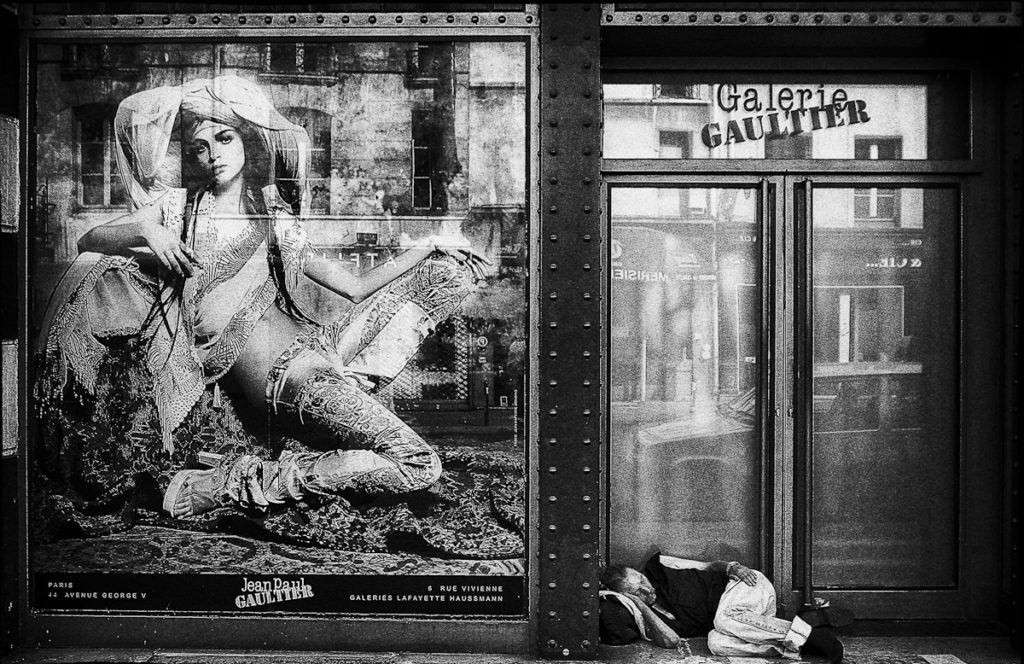
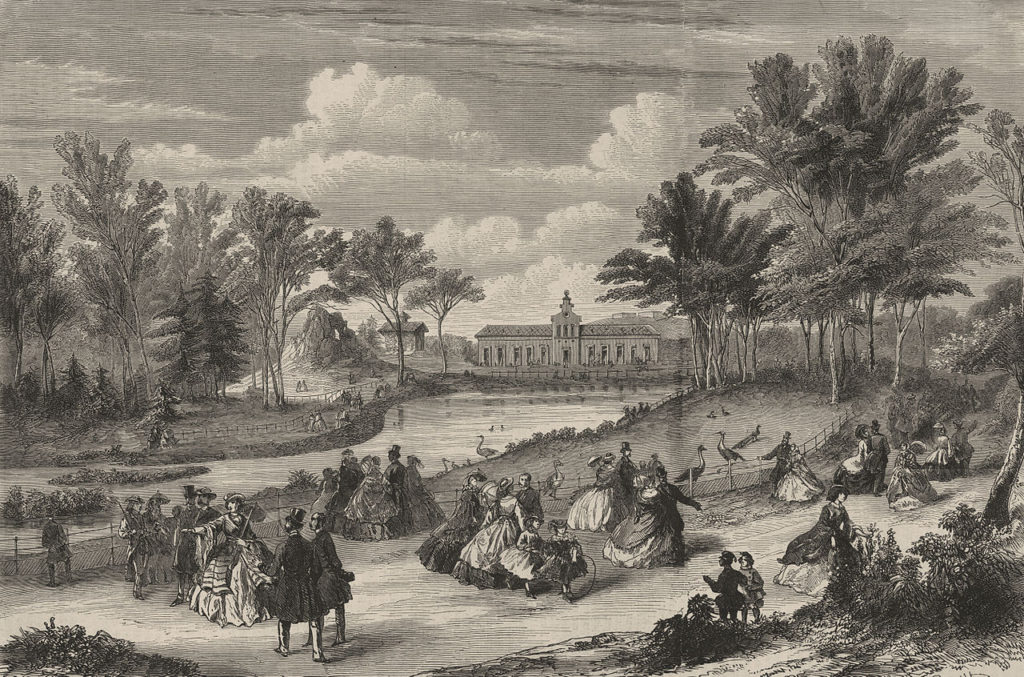
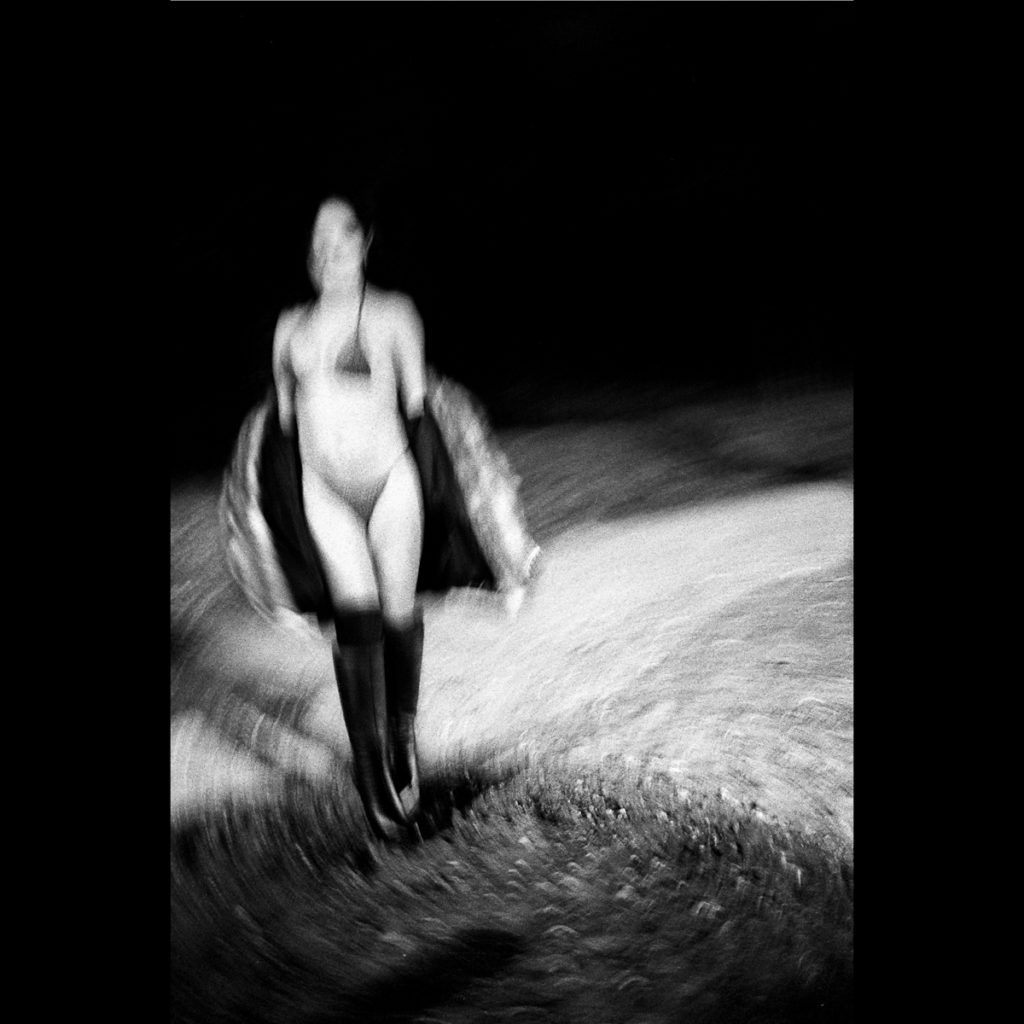
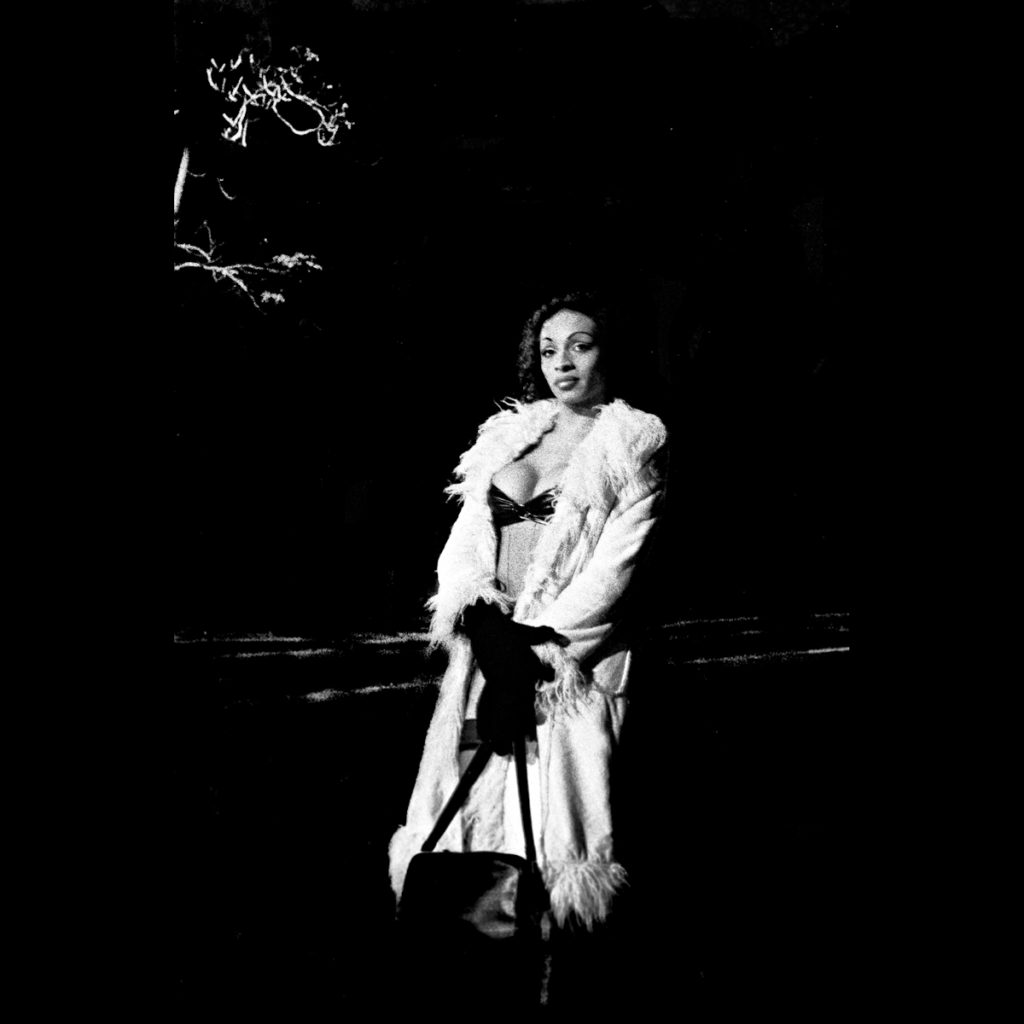
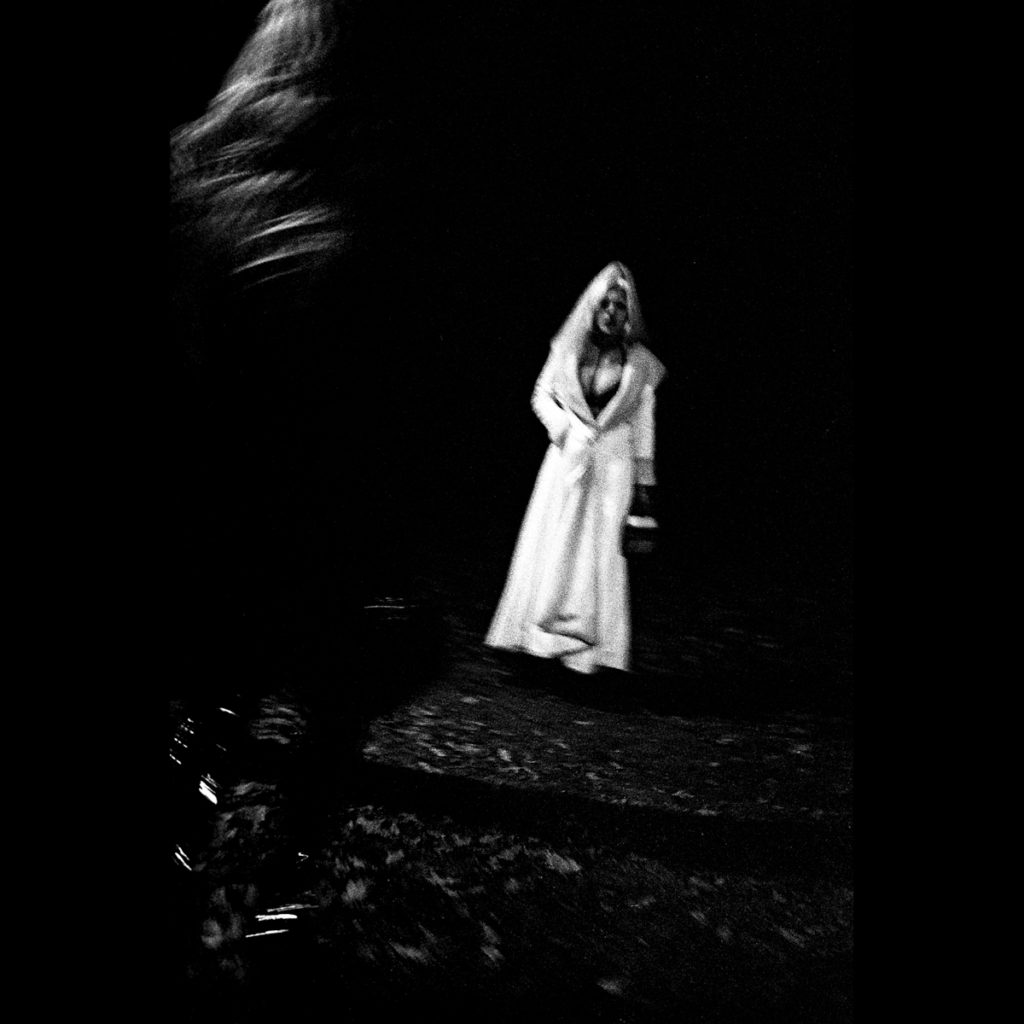
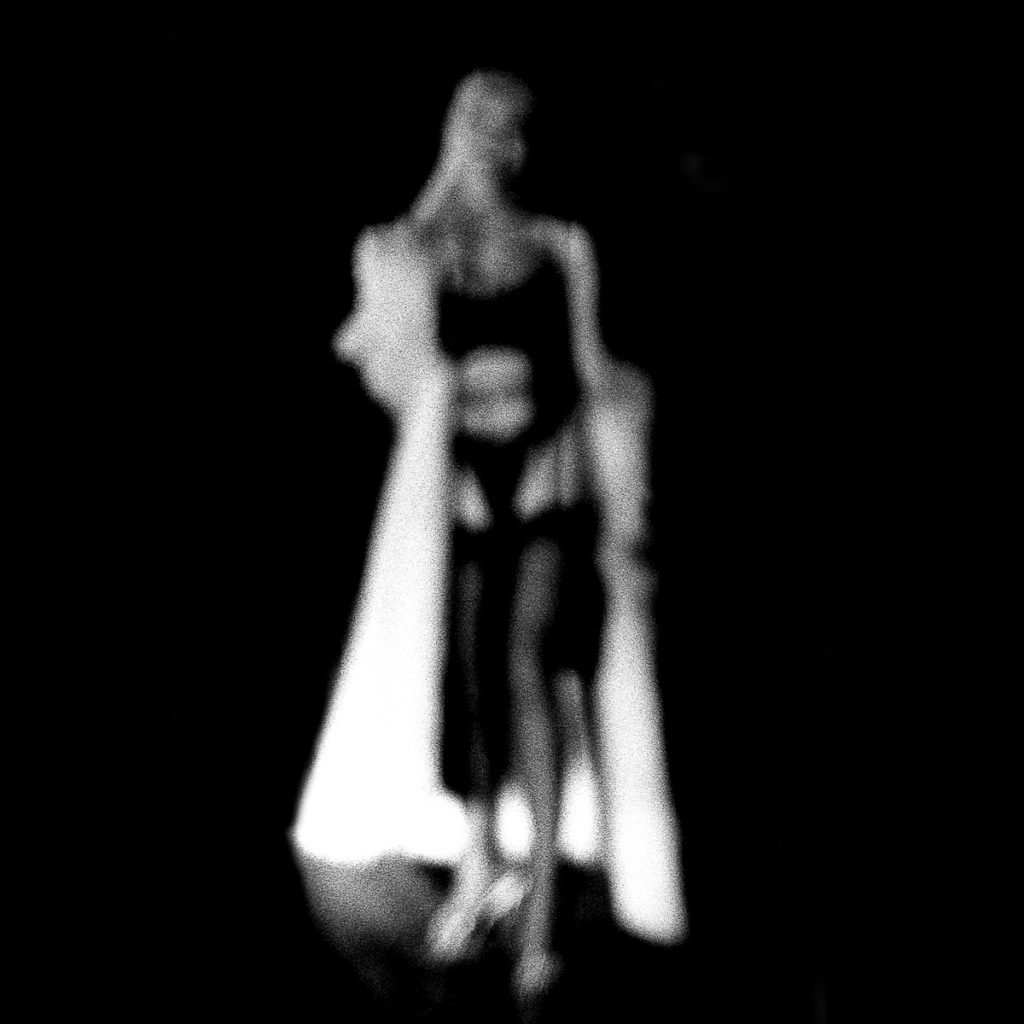
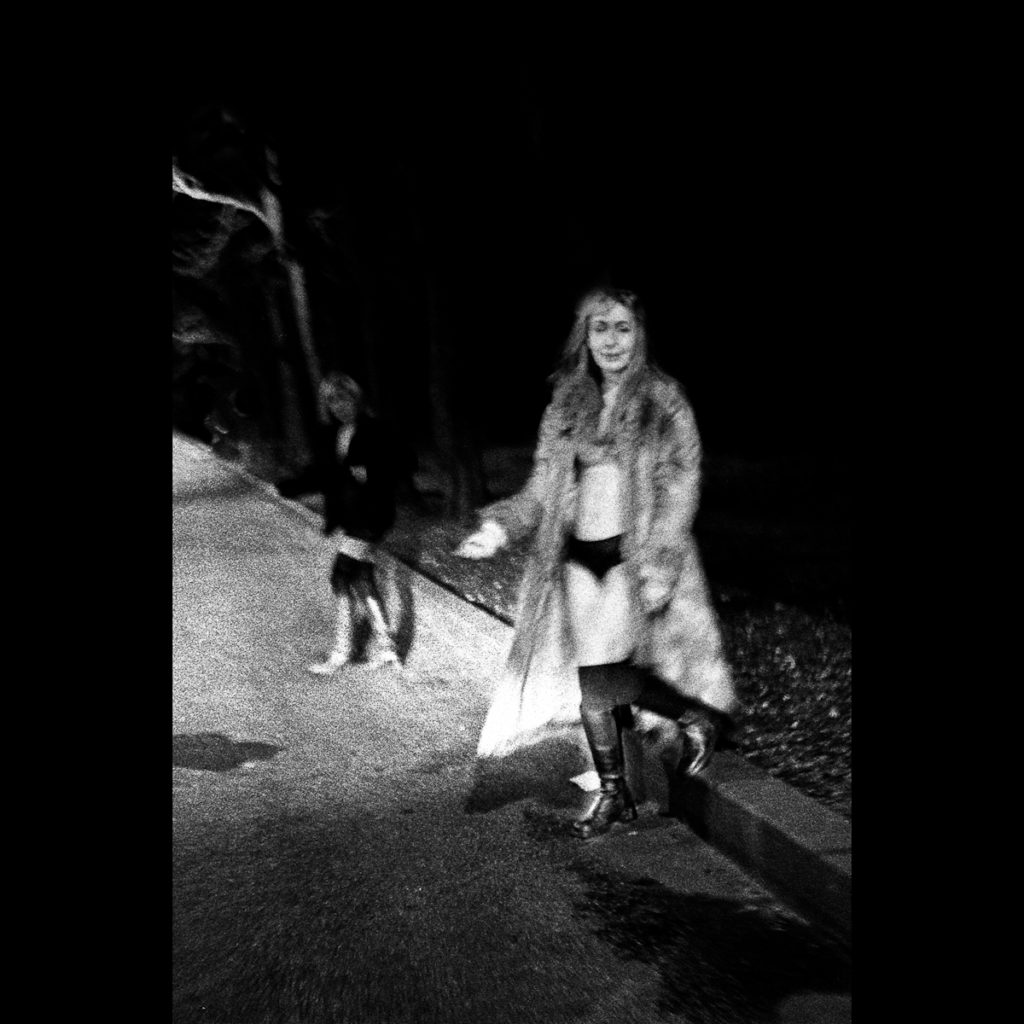
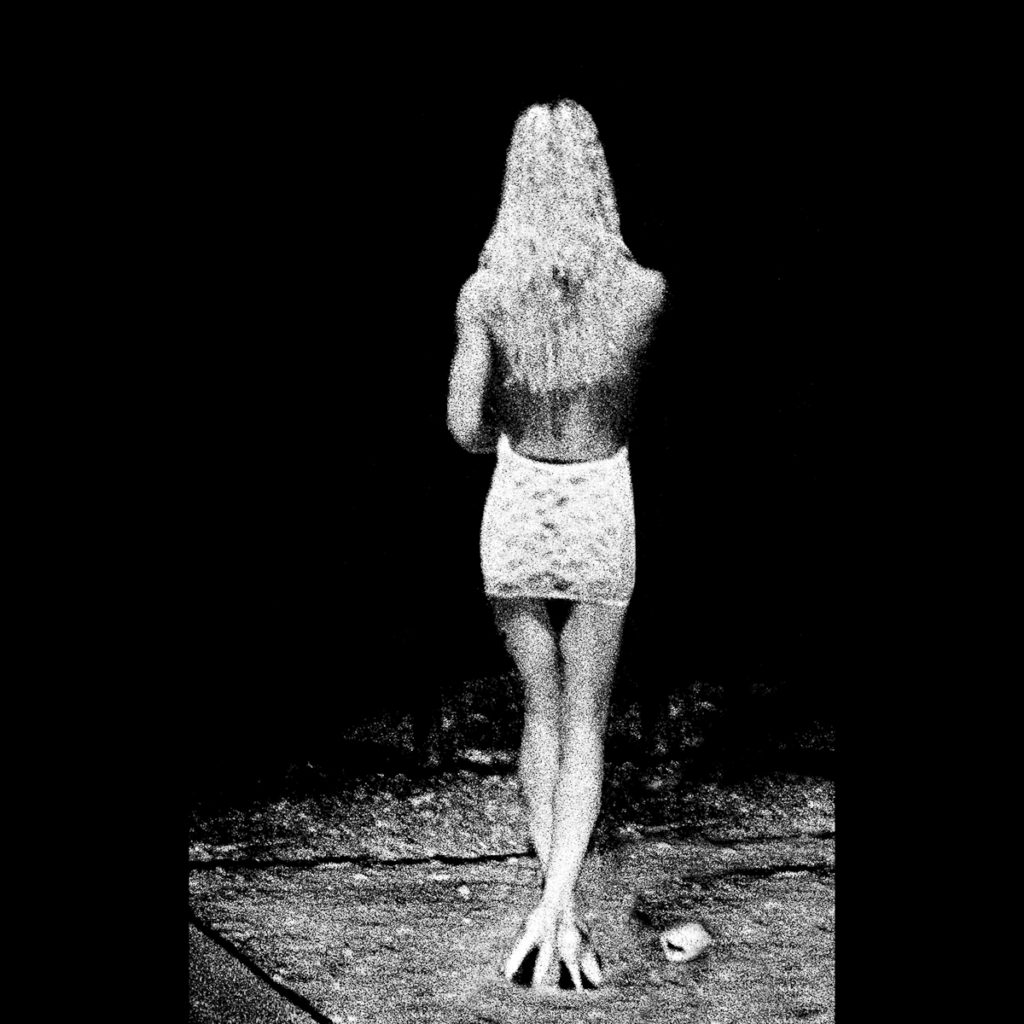


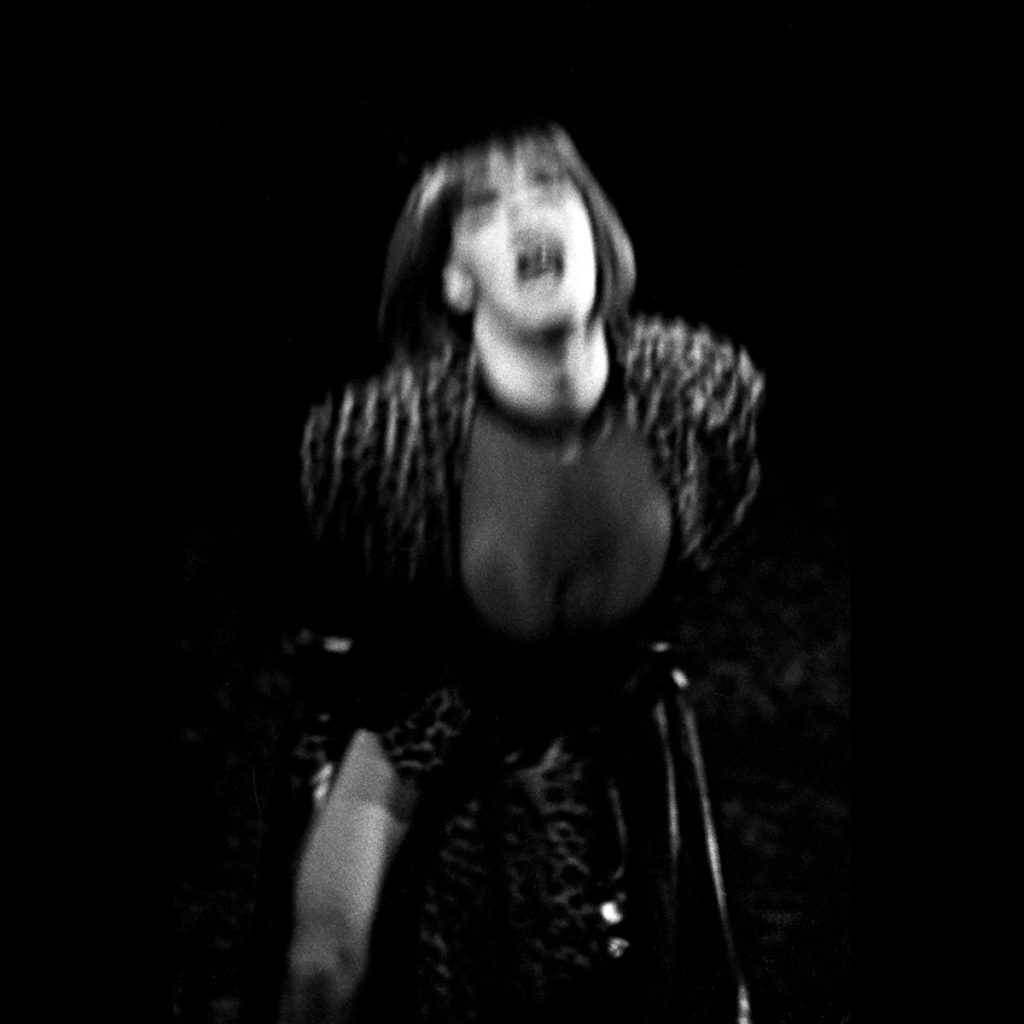
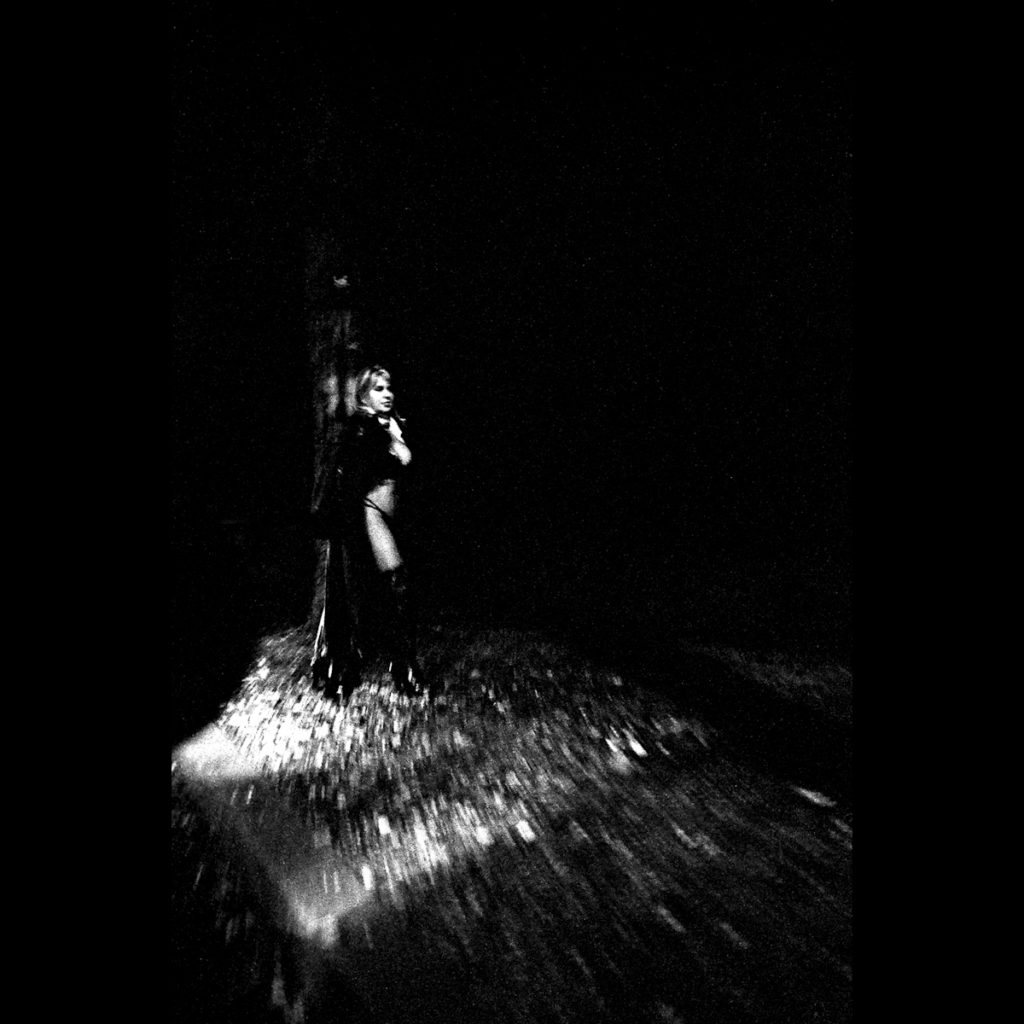
I’m afraid your balls are bigger than mine – probably at any age!
I’m sure a few of those ladies have balls bigger than both of us.
Great snaps…
I took a look at Google Maps, the side panel had a couple of reviews for the park, suggesting it was a nice place to spend an hour or two, another said they couldn’t understand why anyone would recommend it…
I took a look at Street View (May 2018) and it looked quite nice, a bit pastoral with some wooded areas… And then I saw my first tranny, then another… they are all over the place.
I get the feeling it is a bit like Amsterdam… A bit of a tourist spot during the day, with some seedy business going on for people to gawk at…
But likely a very different and sordid place after dark.
Not too bad once you become known as mostly harmless, like the whores around the Herengracht who never failed to chat to my girlfriend and I as we made our way to and from the bar of an evening.
But if you are up to no good, so are they.
Like Barkis, they is willing, if you is.
Great photographs .
There really is something attractive about grain. In the day, I tried all I could to avoid showing it – I wanted paid – but today, I almost invariably add noise to my images just in pursuit of what I once avoided…
Rob
Very True. We were always chasing after less grainy films, but then came digital with its grainless plastic clarity and it woke me to the fact that grain is an integral part of the charm of film. Now the idea of a low grain film seems to make no sense. I look back at the photos I’ve taken with the c-41 B&W films and they have no character. Give me grain, lots of it.
A great read. Thank you.
Film grain reminds us that the picture isn’t real…it’s an abstraction, a sketch, a shadow, a fuzzy memory… while digital imaging aspires to microscopic detail. There’s a place for both.
If there’s one glitch with grain, it’s that it vaguely begins to reach into painting and that, for me, can be a wrong direction for photography to take.
Maybe the thing works better in black and white photos… if you can find Sarah Moon’s Pirelli calendar, in colour, though beautiful, the danger of slipping right over into Degas is pretty hard to ignore.
If you are able to cut that idea from your consciousness, then yeah, grain works beautifully in the right context, black and white or colour.
Rob
A friend is currently in Paris, and calls the night scenes to be ‘the most unsettling place’ he’s ever been. The surreptitious street photographs are great. I wouldn’t be game enough to shoot with a Leica or camera of that size, something more like the Ricoh GR would be what I’d use in that situation.
Excellent pictures that do not conceal anything by being obfuscating. We can imagine, maybe feel things better the less we see. I too, grew up with grain. Kodak 2475 boiled and abused was quite effective I recall. I’m now intentionally blurring and adding grain quite effectively via digital. Heresy perhaps, but time is short. So it goes. Cheers, Peter.
This was my problem when we were in Paris. Pretty much modern photography learned how to walk in Paris in the 1930’s. My wife & I are wandering about, and I thought there were a bunch of ghosts walking behind me: Capa, H C-B, Kertesz; well, you get the point.
Every time I raised my M4 to make a photo, I’d swear they were snickering at me. I could hear them: “Poser…who are you kidding, walking around with a Leica?…we already took pictures of the Eiffel Tower from that perspective – try something original…shoot in this city with the enemy really shooting at you…”
Good article/pics and I always enjoy reading the comments.
Dan [flickr.com/photos/dcastelli9574]
Well this was quite an interesting read, and I enjoyed the photos too, especially that of the swans.
A friend of mine was visiting Paris a few years ago for an exhibition of some of his photos. One night after it closed for the evening, he decided to take a short cut back to his hotel—in spite of warnings for him not to do such a thing. A few fellows hanging out on that dark street in need of cash rather roughly suggested he supply them with his and his expensive Nikon that he had around his neck. He was calm enough to request that they allow him to take the card out before he donated it. In the end he was lucky as plain clothes cops pulled of and frightened the needy fellows away. Then he had to spend a couple of hours at the station answering questions and filling out paper work.
That would put me off night photography there.
But yes, the grain. It is funny how the things we used to hate back in the film days, we now find somehow pleasing. And the things most of us did not care all that much about—boke and shallow DoF for no reason—no seem to be required of a photo.
Dan, the ghosts are ever with us.
Find yourself on a beach in the Bahamas and the memory – if not ghost – of Francis Giacobetti is there smiling as you try to come up with a new take on girl, sand and sea. Try to shoot clothes in a Scottish stately home and, as you frame through a window, your conscience sees Sarah Moon lowering her head to gaze at you over the rims of her spectacles. Walk down a street with your camera hanging loose, and the reflection, in the window, of the attractive lady coming towards you makes you raise that camera to your face just at the moment that Saul Leiter clears his throat.
But ghosts of the living are good, too: my life changed for ever one gloomy, miserably dank Glasgow afternoon as I stood on the steps of a church awaiting the arrival of a bride to the slaughter. I had this vision of David Balley driving up in his Rolls-Royce, slowing to look at me, smile in sympathy, and then drive off again into the murk. I swore to myself that never again would I do this kind of work, that I would put everything on the line, and that if I were unable, finally, to get my ass into the fashion photography business I would quit and become anything else but a photographer. That Damascene moment and visitation saved my sanity and my life: I got there.
Ghosts are sometimes good for you.
If you have watched the two cop series, Engrenages (Spiral) and Braquo, nothing about Paris would come as any surprise. My granddaughter studied there for a year (Law) and had to use the underground a lot; she felt it a very threatening place for any young woman to use, especially because of the racial mixtures and resulting conflicts of male expectations and attitude.
Rob